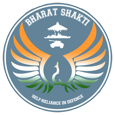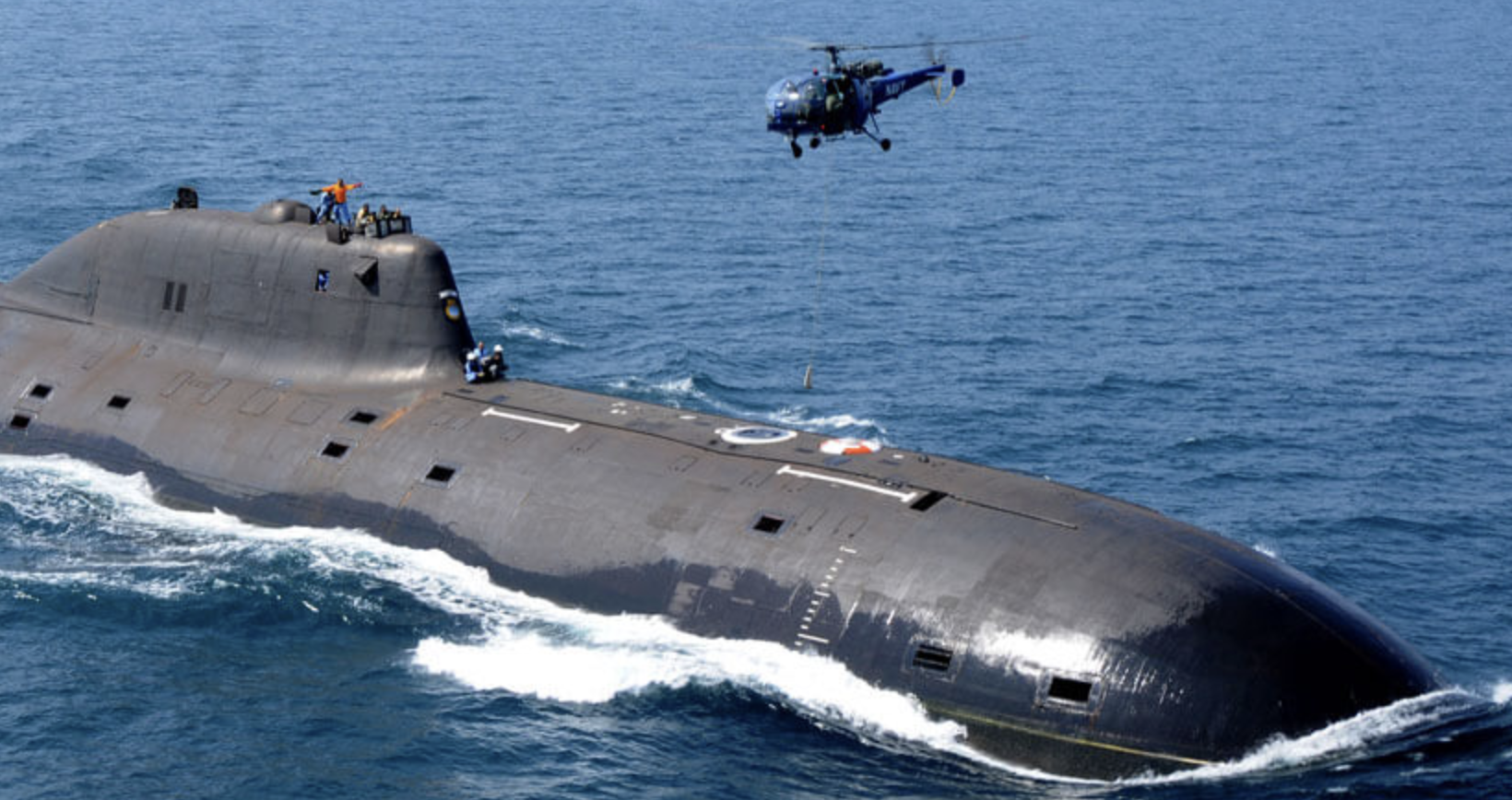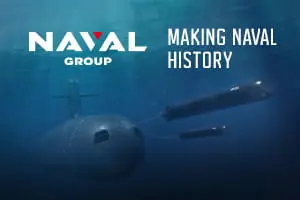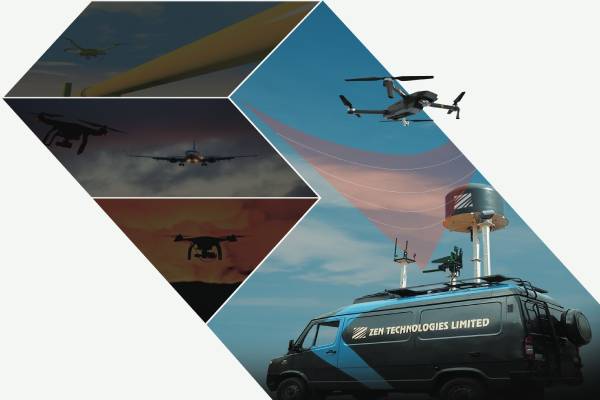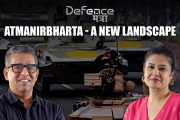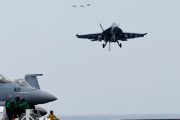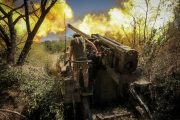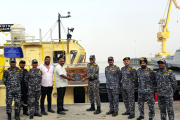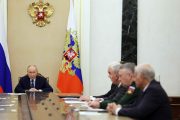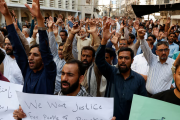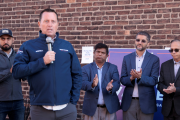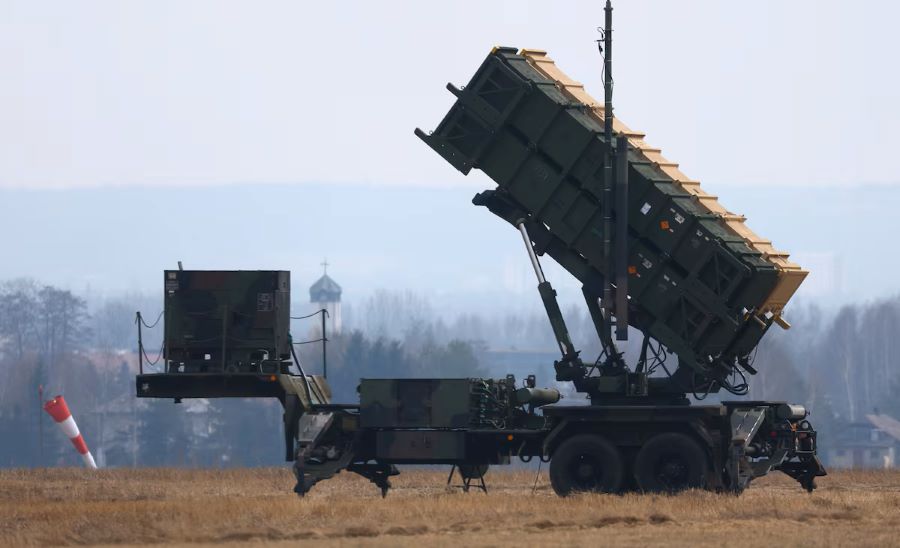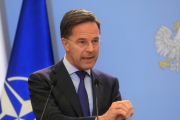The Indian defence industry has a chance to undertake a major transformation in the post-COVID scenario since the twin effects of shrinking budgets and recent policy reforms will enable the armed forces to source many of its requirements locally. This is the time to seize the moment, to pole vault from leapfrogging, feels India’s first Chief of Defence Staff Gen Bipin Rawat in this exclusive interview with Editor-in-Chief Nitin A. Gokhale
Transcript of interview of the CDS by Nitin Gokhale
Hello and welcome to Bharatshakti.in. I am Nitin Gokhale and with me is Gen Bipin Rawat, the first Chief of Defence Staff of India, who is going to speak about the progress that has been made on jointness, integration and implementation of Make in India projects.
Nitin Gokhale: Gen Rawat thank you very much for your time and welcome to this programme.
CDS: Thank You
Nitin Gokhale: I want to start with the recent announcement that the Finance Minister did, can you tell us how are you looking at implementing those defence reforms?
CDS: Well Nitin, the time has now come to look at transformation very differently. To begin with I would like to quote and refer to one particular book I’ve read recently titled “Leap Frogging to Pole-Vaulting”. It’s a book by RaghunathAnantMashelkar and Ravi Pandit. It talks of creating a magic of radical yet sustainable transformation.
We’ve to now look at change, it is not going to be business as usual. The fact that the Department of Military Affairs has been created in the DoD (Department of Defence), is itself a transformation. So, whatever announcements have been made – these are focusing at Make in India initiatives, how the industry can deliver. We made some headway, it’s not that this is something new. But as I said that the time has come from leapfrogging to pole vaulting. We’ve to move faster.
The industry is capable, they are showing some very positive indications. You would have been noticing that as far as manufacturing artillery guns are concerned, some special kinds of ammunition, some night vision devices, personal protective clothing, and bullet-proof jackets & helmets, we made good progress. There is a lot we can do.
Here, I want to refer another book titled “Freedom’s Forge” by Arthur L Herman. It talks about how the US defence industry transformed over a period of two years during the period of World War II (1940-42). There were just two people who made it happen – William S Knudsen and Henry Kaiser. What were their backgrounds – William had a background in steel industry, manufacturing steel,so he had some background how to deal with metals and therefore could deal with military equipment.
But on the other side, Henry Kaiser was a construction engineer and famous for building dams, roads and bridges, big buildings. These two men got together and transformed the defence industry in United States of America. Whatever you saw coming out between 1940 & 42 was an effort of the industry-led by these two people. All the industrialists joined in – they didn’t know what they’re headed to? But at the end what did we see: tanks rolling up, we saw guns coming out, jeeps& trucks, huge quantities of arms and ammunition. Let me tell you that B-29 bomber was also unveiled during this very period.
So, similarly, I think that we need to have confidence in our industry, start looking at how they can help us. I would say some strides have been made. Navy for a long time (has been) supporting the shipbuilding industry. The way, Air Force has been moving in, now, they say we need to look at indigenous aircraft – the LCA Mark I. They now are looking at inducting second squadron and placed orders for 83 more LCAs. I think, that is the way forward.
As far as Indian Army is concerned, our Army Design Bureau has now taken shape, we are working closely with industry and academia and our own people are interacting with several other think tanks. We are getting some positive results from them. We have started small but I think we should now start pole-vaulting and look at bigger issues.
Nitin Gokhale: Time has come for complete transformation with the economic situation- what it is and the limited budgets that are going to be available and the Prime Minister has been saying Make in India should be our mantra. In that respect the decision to limit the tenders and competition below 200 crore to Indian products – it will go a long way and encourage Indian companies to have a field day in that category. So how is it going to work out?
CDS: The Finance Minister said it did not mean that import would stop. But what we have to do is to set certain timelines for various kinds of weapons, equipment and platforms and other systems that we feel can be manufactured in India. Within this timeline we’ve to lay very clear cut guidelines to our industry, DRDO and Ordnance Factories, that if you don’t come up to the mark within this timeframe and whoever comes out with better products will get the deal. This will set in some competition in ordnance factories and the industry. The DRDO has to hasten the processes. For example guns, the country has made some good progress and the private industry, the OFB both have moved fairly satisfactorily.
Therefore, we must set a timeline and after that we will not accept anything as far as artillery guns are concerned. Same is the case with ammunition – larger quantity of ammunitions are being manufactured by the OFB. We will very soon allow private industries into the manufacture of ammunition. The RFIs are already out and we’re quite confident that this high end ammunition which are being manufactured by the OFB, but we’re also dependent on imports. Once this process gets moving then we will stick to timelines. It’s time to give them very strict cut of lines. Time is over for any kind of let offs.
Nitin Gokhale: Timelines are being squeezed. How is the Department of Military Affairs hastening the process or how are you working on that?
CDS: In 2016, we came out with the DPP, subsequently this DPP repeatedly underwent major changes. So we’ve decided to make a new DPP and Department of Defence Production has already come out with draft proposal and (it has been) reviewed by all the stakeholders and soon we’ll have a new DPP which will attempt condensing all these timelines. Our basic idea is to telescope the processes; like it takes 6 months, it can be made in 2-3 months. A trial mechanism which was very-very prolonged – can we’ve simultaneous trials of equipment with services and with the DGQA. We’ve summer and winter trials – can we have trials in such a way that end of summer and beginning of winter can both be worked? That’s how we hasten up.
Other thing, when we work out the GSQRs, if you have to be supportive of our industries and we want products made in India, then we’ve to facilitate them by having GSQRs which are more realistic. So our idea is to have acceptable GSQRs. While we attempt to go for better GSQRs we will accept a shade lower (than the) desirable and we will induct the equipment then tell the industry for improvements of equipment, weapon systems and ammunition and see how things go forward.
Nitin Gokhale: The FDI limits has been raised to 74%, how do you see its panning out? What kind of effect it will have on Indian defence industry?
CDS: We may require technology for complete indigenisation of products and to completely eradicate imports after sometimes; we need technology. To get these technologies, we need to increase FDI – if a foreign collaborator wants to work with OFB or our industry – we can invite them, set up shop here – 74% FDI (route) will be made available to them.
We will also have to support export from that industry. Because any industry which makes base here will be seeking numbers. Upfront they will want to know how much we will take and for how many year; the industry expects sustained (demand for)products. So we will have to come out with a policy framework detailing our requirements of products but it can’t be guaranteed that we’ll be sustaining their complete manufacture. So, while we’ll take some of these products, they can also explore different markets.
It will be developing India into an export hub. We’re looking at exports in a big way and we’ve been given some targets and we will ensure to achieve that. This increase in FDI limit will certainly help.
Nitin Gokhale: Since Indian government is the sole customer for the defence companies they need to have economy of scales. In that respect how will you do the export promotion. Defence Attaches (DA) posted abroad mandated to promote Indian products?
CDS: Yes, recently this mandate has been given to Indian DAs. They have been also provided some funds for that purpose. The idea is to remain in touch and keep updating them about what is coming through in our country and what is that we can export. Even today, we have been exporting defence hardware but we need to move forward in a bigger way and look forward to our DAs becoming more proactive.
Nitin Gokhale: After taking over as CDS, earlier, you talked about the jointness of three services and creating two tri-service commands – one is air defence command and second may be logistics command. What is the progress and what is the timeline and how it is going to progress?
CDS: We have initiated the process of the air defence command where the lead agency is Indian Air Force and they have made good progress. The first presentation has already been given to our Headquarters IDS. We have recommended some minor amendments because we want all the services should be taken along. There is no point coming out with a proposal without having synergy between them. Therefore, it is better that we move in synergised manner. But all said and done, it’s making good headway.
Along with that, we have also decided to go in for the Maritime Command, for which the Indian Navy has been made the lead agency. Earlier we had said we will have peninsula command and then people got into semantics and debates whether we should call it peninsula or ocean maritime command. I think people need to look at the larger game plan, what we are attempting at rather than getting into semantics of terminologies.
When we were thinking about peninsula command, we thought whether to merge the Andaman & Nicobar command as part of it but as we gradually move, the Andaman & Nicobar command is being merged with this command. So we can’t call it peninsular command and decided to call it a Maritime Command.
The terms and reference has been issued to the lead agency the Indian Navy and they are working on it. They too are making satisfactory progress. And finally we are also looking and creating some integrated and joint commands for which the Indian Army is the lead agency. We have given some tasks to all three services.
We are also looking at integrated logistics. We have done some work on this and have created some joint logistics hubs in Chennai, Mumbai and Guwahati. These three have taken off. Now looking at success rate– we will gradually be expanding and finally amalgamate the entire logistics of all three services and create a Logistics Command. Though some amount of integrated command has started happening.
Nitin Gokhale: One of your challenges would be trying to change the mind-set across all the three services. It’s a very onerous task you execute as the first CDS. What is that you tell the services that it’s not about the turf war or it’s not about taking control, it’s all about working together. Are you facing such issues in this process which is underway?
CDS: I’m happy to say it’s not (so). Initially we thought that some reservations among the services will come up. But what we found was old school of thought, veterans had some reservations like how will you diversify air resources? An article wrote that if you have to go for the air defence command and joint or integrated command then you need 60 squadrons of air force. But things have changed, this is an old thought process. I would like to give an example – there used to be a time when air force used to provide close air support to the army. In those times we used to look in terms of numbers – the number of sorties that the air force will give to the armed forces for any particular operations. So we count air support in terms of sorties. Air force has changed now. We ask about sorties they say why you bother about sorties – we’ve an aircraft which can be multi-tasked – it can give you air support, fighter operations, can also do electronic warfare operations. Therefore, don’t count support in terms of counting sorties – you give the task what you want and we’ll accomplish it. And don’t ask what aircraft will be there – leave it to us how we carry out the operations.
When the air force has transformed that way, we start thinking in terms of task of air defence missions. In the same way, if you have limited number of squadrons you certainly have some dedicated squadrons for air defence and some dedicated for theatre commands and rest of the commands can be used according to the priority.
For example, how we deal with the artillery – we have an infantry division which is standard in Indian Army. A division has an (artillery) brigade (under) command, it has finite resources, but is it sufficient for a division to execute the task? No. When a division is given a task – it is given additional resources from other sectors and other formations depending who needs how much of resources. That is how you build up strength. Therefore, there is way in which things move, and saying you need 60 squadrons – not the best way to look at it. You have fourth-generation aircraft which enhances your capabilities that’s where the key lies.
At the same time you have to look at non-contact warfare. We need to focus on the cyber, information, space and the issues of Special Forces – how are they going to operate? Therefore, there will be some kind of centralised control of some assets but some of the assets will have to be decentralised to the theatre commanders for them to conduct operations. But it doesn’t mean that the theatre commands will conduct operation on their own. They will have the support of other theatre commands depending upon who is executing the main task.
Nitin Gokhale: So you are moving from asset based forces to capability based forces. But what are your timelines of the first three, you just talked about? Do we expect that it will be operational or finalised or cleared – theatre commands like maritime and air defence commands? Do you see them coming up by 2021 or what’s the timeline?
CDS: Executive instructions has been issued for the air defence commands, we are hopeful that the directives will come out by the end of this year and then it starts taking shape. According to me, in next one or two years these commands should be fully functional.
Same is the case with the Maritime Command. May be early next year we should be giving them the directives and again in one or two years they should begin to take shape.
As far as the integrated or joint commands, by next year end, we will be able to issue the executive directions and then the transformations will start. If in next two to three years the directions are issued, then transformation begins to happen. It may take two to three years to fructify but I think the process of transformation should start happening.
Nitin Gokhale: So you are looking at five years window to establish everything. I want one clarification – you spoke about Andaman Nicobar Command will being merged into Maritime Command – is that the thought process now instead of peninsular command?
CDS: It is, because when we talked about peninsular command it was felt that it has got a very defensive mindset. The Navy and other supporting agencies must now look at Indian Ocean region as one entity. So that has to happen. The Andaman Nicobar command lies within the IOR. In fact, we are very fortunate to have this kind of territories along the IOR. So we have to look at a maritime command; one command that takes under its wings the Andaman Nicobar command.
Nitin Gokhale: You talked about Northern and Eastern Commands as we go along, but the basic question is about the availability of resources and funds – clearly the budgets are going to be squeezed but the optimization of resources is something that you would be interested in. How are you working, how are you getting the prioritisation done?
CDS: The entire efforts of integration whether air defence command, maritime command and the theatre commands – will itself lead to some savings. Rather than working as separate verticals, now we are working horizontally. Therefore, we will be saving a lot of funds, like on communication assets, logistics, and maintenance systems.
There will be constraints on budgets but the government has told us as far as the transformation is concerned we will keep supporting you. In the time of COVID-19, there will be some pressures but we have to learn to live with that. The DMA will see what requirements are needed for next five years and then it will take it to the government. Simultaneously, the Department of Defence is also working closely with the Ministry of Finance to see how more funds can be generated.
We are looking at monetisation of lands and some other mechanism that are being worked out. We also want to walk the extra mile – like can we reduce the pension budget by increasing the ages of retirement. Besides, generating resources internally as well.
Nitin Gokhale: I think that sums up about the very challenging tasks that DMA has taken up and we hope that the three services will be optimizing the resources and working in a joint and integrated fashion in coming months and years.
Thank you very much, Gen Rawat, for this very insightful and informative interview and we will keep coming back to you and asking about the progress made.
Thank you very much
CDS: Thank you Nitin
By: Team BharatShakti

